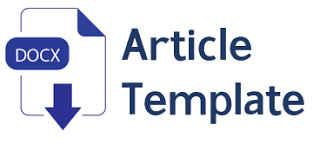SLANG WORDS IN PANDEMIC CONDITION IN INDONESIA
Abstract
Slang is one of ways to make language unique. It makes language spoken in society vary. The variation creates new context that is only understood by a certain community. One variation occurs in the pandemic condition in Indonesia. The variation is known as slang. It emerges as the effect of the social diversity of speakers. Its language characteristic is closely connected to the socio-linguistic phenomenon in society. Hence, it is important to conduct analysis on the form and function of slang in the government instruction in mass communication in the pandemic condition in Indonesia. There are five classifications used to classify the slangs. They are fresh and creative, flippant, imitative, acronym, and clipping. Fresh and creative showed any in the government instruction, flippant emerged in some government instructions. Imitative and acronym also emerged in some government instructions, while clipping did not emerge in any of the government instruction. It may happen because some people often use slangs in flippant, imitative, and acronym classifications in their daily life context and conversation.
Full Text:
PDFReferences
Allan, K. and K. Burridge. (2006). Forbidden Word. New York: Cambridge
Bussmann, H. (1996). Dictionary of Language and Linguistics. Routledge
Chaer, A and Leoni Agustina. (2010). Sosiolinguistik. Jakarta: Rineka Cipta
Holmes, J. (1997). An Introduction to Sociolinguistics. New York: Longman
Kridalaksana, H. (1978). Sosiolinguistik dalam Leksikografi. Tugu: Panitia Penataran Leksikografi (Pusat Bahasa)
Kridalaksana, H. (2008). Kamus Linguistik. Jakarta: PT Gramedia Pustaka Utama
Wardaugh, R. (2000). An Introduction to Linguistics. 3rd Ed. Cambridge: Blackwell
DOI: https://doi.org/10.35314/inovish.v6i2.2054
Refbacks
- There are currently no refbacks.




